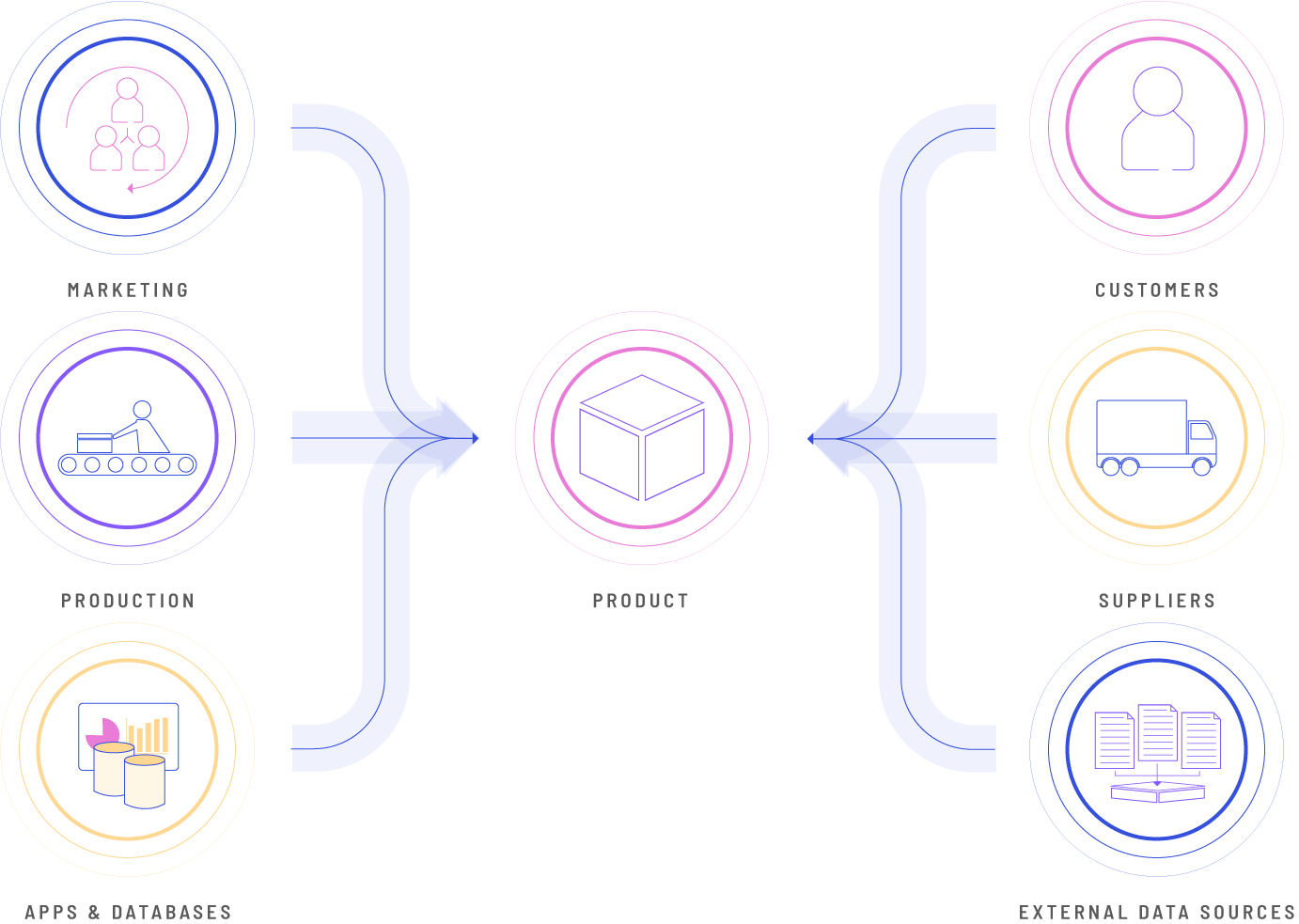As we get close to bringing down the curtain for 2022, we thought we’d look forwards to see what tech trends we might see in 2023. Is our list simply hype, or will they be the new shiny must-haves? Here is the list of what we think will be big in 2023.
Will AI finally fulfill its promise?
Artificial intelligence is making big strides and if you’re a Twitter user, you will no doubt have a timeline full of ChatGPT. It really is the new Wordle for timeline takeovers. AI has no doubt been in many ‘look ahead’ articles for the past decade, but it never really materialized. Many companies branded themselves as AI, when really they weren’t. However, some of the advancements seen with ChatGPT alone are quite remarkable. Many are clamoring and making outlandish claims such as it will replace Stackoverflow and Google.
In 5 days, ChatGPT alone had one million users. There are still a lot of question marks over use cases and the credibility of answers, however, this technology is causing a stir and will improve. Open AI is the current flavor of the month and we like that it’s open source and will no doubt attract a lot of intelligent people to contribute to the project. Other notable names in the AI space include Ready Player One’s Meta Platforms, IBM, and Amazon Web Services. Will we all be out of a job in 2023, with lots of free time to paint and write poetry? Probably not, but it’s an interesting space to watch develop.
ChatGPT launched on wednesday. today it crossed 1 million users!
— Sam Altman (@sama) December 5, 2022
Time it took to reach 1 million users:
— Kate (@whoiskatrin) December 7, 2022
Netflix - 3.5 years
Facebook - 10 months
Spotify - 5 months
Instagram - 2.5 months
ChatGPT - 5 days
Avengers End Game – WebAssembly
WebAssembly, or Wasm for short, is a programming language for the web. It can easily run in modern browsers and the code is a low level binary format. It isn’t essentially a programming language as such, more of an assembly language that (in theory) can compile any language into a format that web browsers can understand. It is fast and efficient, easy to understand, and easy to debug.
Many are saying that Wasm will replace JavaScript, and judging by the JS complaints from front end developers on Twitter, that may be a very biased conclusion driven by frustration. Interestingly, this article compares the speed of JavaScript and Wasm, and surprisingly for the more simple tasks, JS comes out quicker. It’s when things get more complex that Wasm shines.
Wasm looks like it will be able to deliver heavier browser based applications with speed and performance, and the fact that devs can use their favorite programming language, it could be very big in driving the next generation of apps over a browser.
Content Infrastructure for the Connected World
Content infrastructure is something that has been on our minds for a couple of years and we’ve been working towards in recent months. Knowledge graphs have been making waves in the publishing industry for a little while now, used to better connect relevant content with readers. The theory behind this also applies to large enterprises and their information, knowledge, and content.
We’re busy building a headless CMS platform that connects people, processes, content, and operational and transactional data across the organization, akin to a content mesh. This information, generated from day-to-day activities and interactions builds up reusable knowledge and content that can be discovered, shared, and served via APIs to front ends to improve productivity, efficiency, and communication.
Content infrastructure, we hope, will play a big role in 2023 as companies try to fathom their disparate teams and processes and find ways of utilizing their dev talent to share this knowledge across the organization.

Winter is coming?
Big tech has been trigger-happy in recent months. Well-publicized layoffs across Twitter and Meta have seen thousands of talented IT professionals lose their jobs. Investors in tech have tightened their purse strings too as many predict a gloomy outlook for the global economy.
Unfortunately, the way of the world that it is, with Musk sycophants and CEOs encouraging the hustle culture, we could see some unprecedented and unwelcome change in the tech space. Some will look to the tech giants and think, ‘if they can cut half their staff and still function, then I can do the same.’ Some will be forced to make cuts as consumers have less cash to spend, and some will simply demand more from less.
The tech space has suffered from a skills shortage problem for many years, but as competition for roles increases and with basic supply and demand, wages may stagnate as organizations revel in the power of choice. However, it’s not all doom and gloom (we did not like writing this prediction one bit) as those aforementioned talented IT professionals will use their time wisely and we will see the rise of innovative apps and solutions developed by those with a little more free time to devote to their own projects.
On the Hunt for Value – Save Money and Increase Productivity
On the flip side of the economic slowdown, many businesses will be looking for ways to increase productivity and save money at the same time. Much like our content infrastructure approach where headless CMS can replace a myriad of databases, applications, dashboards, and front ends, businesses will be looking to consolidate software vendors to save money and increase productivity. Increasingly organizations will seek the assistance of AI to improve efficiency and this is expected to outpace the 2023 5.1% increase in IT spending as predicted by Gartner.
More Domain Involvement in Data Management
Data contracts and data mesh have been spoken about in great length in 2022 and both have one thing in common. More domain involvement and responsibility in data creation and quality. Historically, the poor data team has had all the responsibility and this has led to a lot of dissatisfaction in the job and businesses have not been able to see the value of their data.
Times are changing and data mesh in particular is making big strides. Netflix, Airbnb, and JP Morgan are just a few examples of companies adopting data mesh. There are more resources to learn from and a greater understanding of the physical and mental implementation of data mesh. Technology is catching up too as examples and understanding of things like governance and interoperability grow. We expect data mesh to gather steam in 2023.
Google is the Spaghetti in that Scene from Lady and the Tramp
Google is the search supremo. But are they under threat? Tiktok and AI chat are eating search from both ends. For transactional searches Tiktok is becoming increasingly powerful as GenZ turns to influencers to help them discover products. Tiktok is not particularly well geared up to be a search engine for everything, for instance, searching for restaurants near you is no good, but searching for restaurants in XX town is very handy. Google has spoiled itself here with too much paid content and rewarding better SEO rather than relevance.
On the other side of the spectrum, when you want to search for answers to questions, Google can be increasingly frustrating. Forever trying to sell something or just getting things wrong. As demonstrated by ChatGPT, AI chatbots could be the answer for question-specific searches. We’ve seen people using it for pair programming and to find code examples, someone even said they’d pay $1,000 a month for the service! There are question marks about the validity of some answers, but the general consensus seems to be, ‘mind blown’.

Google is done.
— josh (@jdjkelly) November 30, 2022
Compare the quality of these responses (ChatGPT) pic.twitter.com/VGO7usvlIB
Pluggable Schema & Data for True Interoperability
The old monolith. Slow, big, scary. Time for something lighter and more flexible?
Pluggable schema and data refers to the ability of a system or application to allow different types of data to be integrated and used within it, without requiring any changes to the system’s underlying architecture. This allows for greater flexibility and scalability, as the system can easily accommodate new data sources and types without the need for extensive reworking or redesign. Additionally, pluggable schema and data can help to improve the quality and consistency of the data being used within the system, as it allows for the use of standardized schemas to define the structure and format of the data. This can help to prevent errors and ensure that the data can be effectively accessed and analyzed. Overall, the main benefits of pluggable schema and data are increased flexibility, scalability, and data quality.
A Country Will Launch Cloud as a Public Utility
Amid concerns over data security and the prohibitive cost of innovation, we expect a government, not-for-profit, or community to launch a cloud service as a public utility. We know some nations are looking into the prospect of a cloud offering that is publicly owned and driven not by profits, but by providing a level playing field for tech innovators. We expect this to be in the EU somewhere rather than the US as the former has a bee in its bonnet about US big tech, and the US will not do anything to weaken the power of their powerhouse giants.
The Butlerian jihad
The Butlerian jihad is a fictional event that is referenced in the “Dune” series of science fiction novels written by Frank Herbert. In the story, the Butlerian jihad is a religious crusade that was launched by humans against the thinking machines that had come to dominate their society. The jihad was successful in destroying the machines and establishing a new order in which advanced artificial intelligence was banned and the use of computers was strictly controlled.
As AI becomes more mainstream, watch out for those predicting the end of humanity.
Our stand at #WAICF was picketed overnight by anti-AI activists. 'Death to the un-alives'. pic.twitter.com/pyVbQeb4Gr
— TerminusDB (@TerminusDB) April 15, 2022
The uprising is happening already. We were picketed at an event earlier this year.
